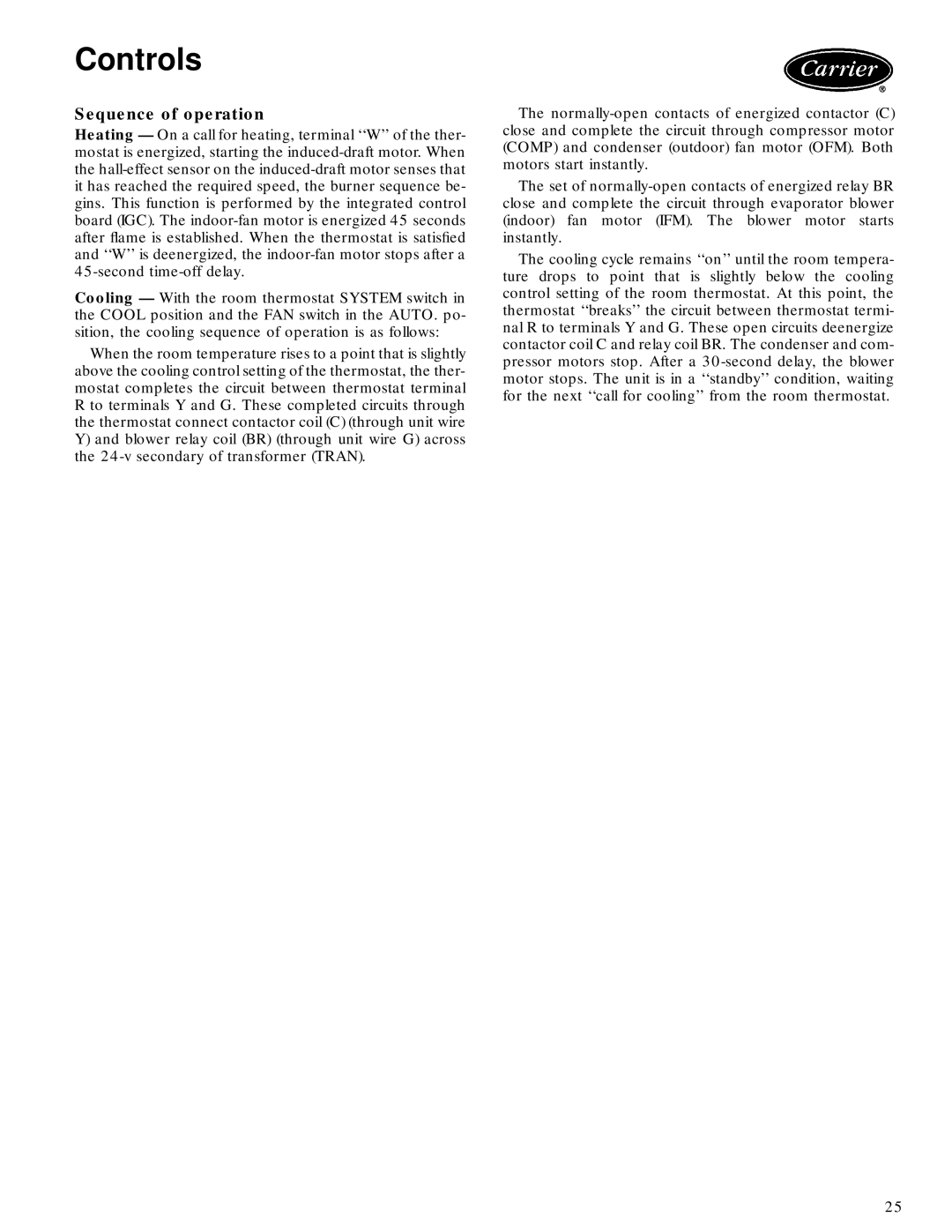Controls
Sequence of operation
Heating Ð On a call for heating, terminal ``W'' of the ther- mostat is energized, starting the
Cooling Ð With the room thermostat SYSTEM switch in the COOL position and the FAN switch in the AUTO. po- sition, the cooling sequence of operation is as follows:
When the room temperature rises to a point that is slightly above the cooling control setting of the thermostat, the ther- mostat completes the circuit between thermostat terminal R to terminals Y and G. These completed circuits through the thermostat connect contactor coil (C) (through unit wire
Y)and blower relay coil (BR) (through unit wire G) across the
The
The set of
The cooling cycle remains ``on'' until the room tempera- ture drops to point that is slightly below the cooling control setting of the room thermostat. At this point, the thermostat ``breaks'' the circuit between thermostat termi- nal R to terminals Y and G. These open circuits deenergize contactor coil C and relay coil BR. The condenser and com- pressor motors stop. After a
25
